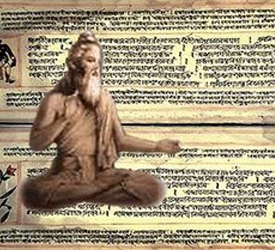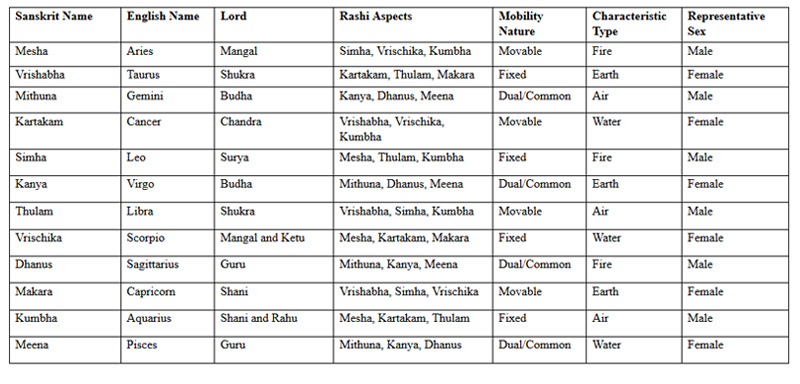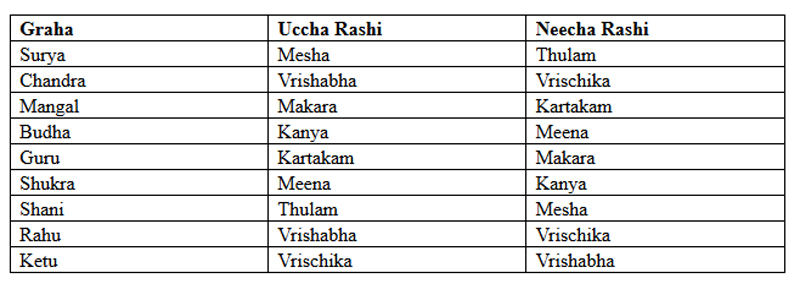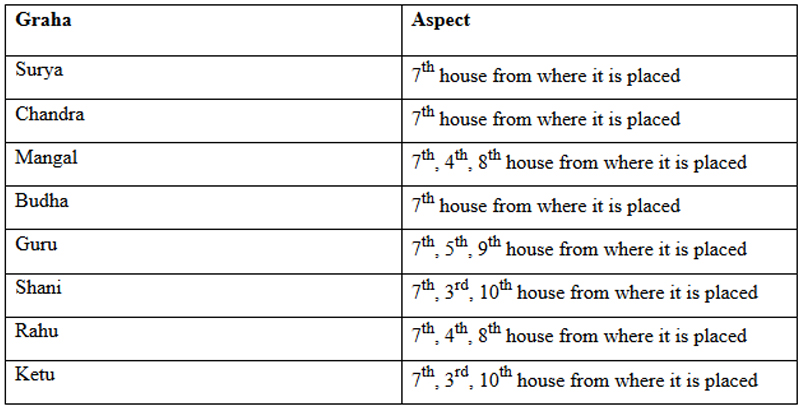Truth can not be suppressed and always is the ultimate victor.

Vedic Concepts
Veda is divided into four major parts viz, Samhitas (prayers), Brahmanas (rituals), Aranyakas ( meditations) and Upanishads (The knowledge of self). The first three (Samhita, Brahmana & Aranyaka) are collectively called as Veda Purva (Starting) and the last one Upanishad is called as Veda Anta (ending) or Vedanta. The Veda Purva is also referred as Karma Kanda (Portion dealing with Rituals & Activities) and Vedanta as Jnana Kanda (Portion dealing with The Knowledge of Supreme Self).
Vedic Astrology
The core principle of Vedic Astrology is that heavenly bodies a.k.a Grahas (Planets) affect the life of beings on earth. On the same lines, the planets in the solar system affect the earthly beings more than those in the farther outer space. The planets that are considered in Vedic Astrology are Surya (Sun), Chandra (Moon), Mangal (Mars), Budha (Mercury), Guru (Jupiter), Shukra (Venus) and Shani (Saturn). Rahu (North node of moon) and Ketu (South node of moon) are the other two shadow planets taken into consideration apart from the seven main planets. Apart from these, Vedic Astrology has numerous mathematical points that are to be considered.
Astrology is as old as Vedas themselves. The Vedas which are the sacred Hindu scriptures, embody eternal knowledge. Strict moral and spiritual practices along with the deep study are prerequisities to understand the essence of Vedas. To the uninitiated, the Vedas might appear as nothing more than ritualistic oblations to air, water and thunder etc. Deep truths, however begin to unfold to the true seeker as his search goes on.
There are 12 houses in a Vedic Astrology chart. Each of these houses is representative of certain areas of a human life. Also, each of these 12 houses has a natural signifier planet known as Karakas in Vedic Astrology. Given below is the table of each of the 12 houses and their significations along with the karakas.

In time of yore, sincere seekers of truth and knowledge in India used to spend years and years at the feet of their 'gurus', learning the meaning hidden in Vedas. In order to decipher what lies concealed in Vedas, a study of certain subjects is considered a prerequisite. These subjects are called the 'Vedangas' or the body organs of the Vedas.
Astrology is the scientific study and application of language of the heavenly bodies. These heavenly bodies determined on the basis of Astronomy and mathematics, are mapped in the form of a horoscope. Their specific locations in the horoscope indicate specific happenings in the case of individuals, of multitudes and of geographical regions. Whether the Sun, the Moon, the planets and stars themselves influence the terrestrial phenomena, or they only indicate such phenomena by their various dispositions, is immaterial. What is important to us is that variations in their disposition determine variations in the events on the earth; the correlations are only too strong to be brushed aside by critics of Astrology.
Then Vedic Astrology has the concept of Rashi (sign). There are 12 rashis in total. Rashis are basically 12 divisions of the 360o zodiac. Each of these rashis is lorded by particular planet(s). Each of these rashis aspect other three rashis in the zodiac – aspects from rashi consisting of good planets and otherwise good house are beneficial and the aspects from rashi containing bad planets and otherwise bad houses are malefic. Given below is the table of 12 rashis and their lords, along with other details.

Sub-Divisions of Astrology
Samhita, Siddhanta or Tantra or Ganita [(a) Surya Siddhanta,(b) Paulisha Siddhanta,(c) Romaka Siddhanta,(d) Vasishtha Siddhanta,(e) Paitamaha Siddhanta)],Hora[ (a) Individual horoscopes, or Jataka, or natal charts of a person; (b) Muhurta or electional Astrology, which concerns itself with the election of favourable planetary dispositions to achieve specific accomplishments in day-to-day life. ]
Each planet is supposed to give certain results. Now each of these planets give intense (mainly in a good way) results in a particular rashi and weak (mainly in a bad way) results in another rashi. The rashi in which the planet gives good results is known as its Uccha (Exaltation) rashi and the one in which the planet gives bad results is known as its Neecha (Debilitation) rashi. Given below is a list of Neecha and Uccha rashis of planets. The table below gives the uccha, Neecha rashis of the grahas as well as information about their aspects.

Each graha aspects other grahas just like rashis, as shown in the table below. Note that each graha aspects the 7th house from it always. Apart from that, some grahas like Mangal, Guru, Shani, Rahu and Ketu aspects other houses. Aspects from good planets in the chart are always beneficial and that from bad planets are malefic.

